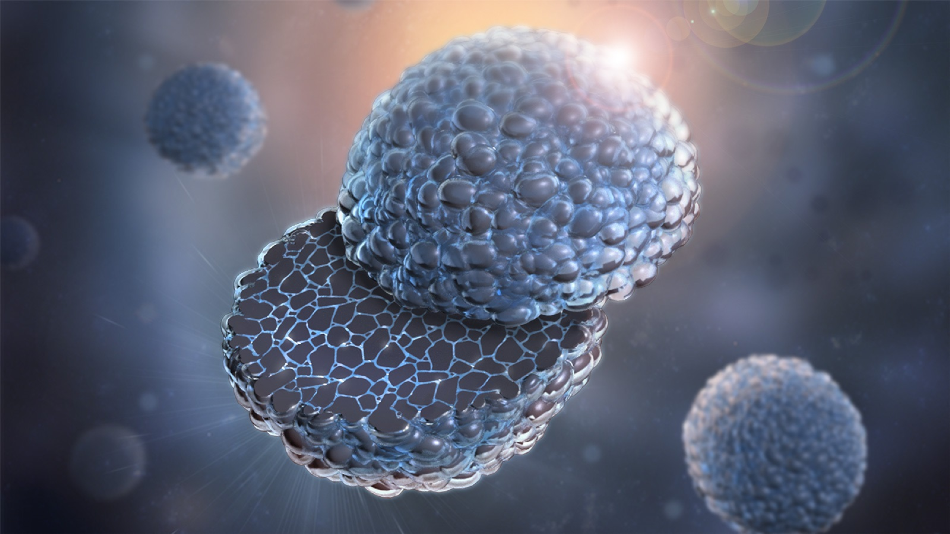Jul 9 2020
A new particle-level cathode coating has been developed by the U.S. Department of Energy’s (DOE) Argonne National Laboratory, jointly with Hong Kong University of Science and Technology (HKUST). The new coating can increase the life and safety of lithium-ion batteries.
 PEDOT is coated on both primary and secondary particles of NMC cathode used in EVs. This coating protects the cathode against reactivity with electrolyte and extends the life of the battery. Image Credit: Argonne National Laboratory.
PEDOT is coated on both primary and secondary particles of NMC cathode used in EVs. This coating protects the cathode against reactivity with electrolyte and extends the life of the battery. Image Credit: Argonne National Laboratory.
The concept was being developed for the past three years at Argonne, together with HKUST. The project was financially supported by the DOE’s Office of Renewable Energy and Energy Efficiency, Vehicle Technologies Office.
This is an incredibly exciting advancement. This could significantly improve our experience with the devices we’ve come to rely on.
Khalil Amine, Distinguished Fellow and Head, Technology Development Group, Electrochemical Energy Storage Department, Chemical Sciences and Engineering Division, Argonne National Laboratory
The preliminary experiment was performed in Hong Kong: the set-up ideal for the experiment was present at HKUST, which could perform the study under the specifications of Argonne.
For over 15 years, cathode coating technology has been used in lithium batteries that are used to power electric cars, computers and cell phones.
However, they had several limitations: It is just a partial coating that covers only a small portion of the outer side of the cathode particle and fails to protect the cathode while operating at high temperature or at a high voltage.
The cathodes investigated by the group are metal oxides made of manganese, cobalt, and nickel. When charged at a high voltage, a cathode tends to generate oxygen that, in turn, oxidizes the electrolyte.
This leads to the formation of an undesirable film on the cathode, which results in energy loss. The speed of such reactions is increased by high temperatures, which compromises the electrochemical performance of the battery itself.
Developed using a conducting polymer known as poly(3,4-ethylenedioxythiophene) (PEDOT), the new coating is a breakthrough in lithium-ion battery technology as it completely protects each particle of the cathode—both from within and outside—from reactivity with the electrolyte.
Argonne’s oxidative chemical vapor deposition technique is used to apply PEDOT. The technique involves using gas to make sure the coating is formed on each and every particle of the cathode, forming a rugged skin.
The traditional coating slows down the diffusion of lithium both inside and outside of the cathode particle, which leads to a decline in battery efficiency caused by poor ionic and electronic conductivity.
On the contrary, the new coating developed at Argonne enables the transport of lithium ions and electrons into and out of the cathode, boosting the energy produced by the battery.
Argonne’s Center for Nanoscale Materials (CNM), a DOE Office of Science User Facility, has been a major contributor to the experimentation.
CNM’s Zeiss NVision 40 focused ion beam-scanning electron microscopy dual-beam system and FEI Talos F200X (S)TEM fitted with a SuperX energy-dispersive X-ray spectrometer were used by the group to confirm the application of PEDOT on primary and secondary particles of layered cathodes, as well as their stability following battery cycling.
According to Amine, Argonne assistant chemist Gui-Liang Xu of the Chemical Sciences and Engineering Division (CSE), scientist Yuzi Liu (CNM), postdoctoral appointee Xiang Liu (CSE), postdoctoral research scholar Han Gao (CSE), visiting graduate student Xinwei Zhou (CNM), physicist Yang Ren of the Advanced Photon Source, another DOE Office of Science User Facility at Argonne, and Zonghai Chen (CSE) also contributed to the study.
At present, lithium-ion batteries work at a voltage of 4.2 V at the cell level. The new coating could enable the voltage to be increased to 4.6 V. This 15% difference can result in a considerable reduction of cost of the entire battery pack.
This would increase the driving range of electric cars and boost the battery life of cell phones and laptops, ultimately changing the way we live.
Khalil Amine, Distinguished Fellow and Head, Technology Development Group, Electrochemical Energy Storage Department, Chemical Sciences and Engineering Division, Argonne National Laboratory
Journal Reference:
Xiong, B.-Q., et al. (2020) Boosting Superior Lithium Storage Performance of Alloy‐Based Anode Materials via Ultraconformal Sb Coating–Derived Favorable Solid‐Electrolyte Interphase. Advanced Energy Materials. doi.org/10.1002/aenm.201903186.